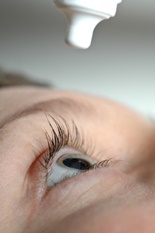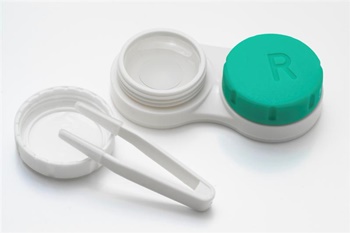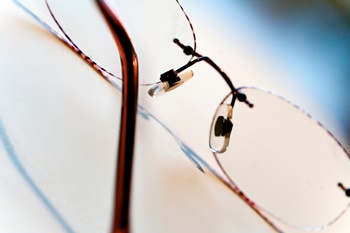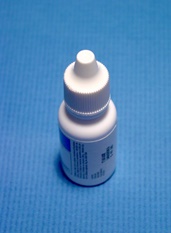Services
Dr. Wilkes examines patients of all ages. Regular comprehensive eye examinations are the best insurance policy against vision loss. Glaucoma, cataracts, macular degeneration, and diabetic retinopathy are just a few of the diseases and problems that are diagnosed and addressed through regular eye care. 75% of learning is visual, and yet the majority of grade school children do not have an annual eye exam. Dr. Wilkes fits all types of contact lenses including contacts for nearsightedness, farsightedness, astigmatism, and bifocal contacts.
Thorough eye examinations are necessary to diagnose and treat amblyopia (lazy eye). Amblyopia (lazy eye) is much more effectively treated before a child reaches 10 years of age. Many children in school that struggle with reading are farsighted (hyperopic) and need a simple pair of glasses to take the strain off of their eyes.
Please refer to the eyecare section of this website for a better idea of what a thorough eye examination should include and do for a patient.
Contact Lenses
Contact lenses are a wonderful vision correction option. Over the last number of years, contact lenses have become easier to use and more effective than they have ever been. There are two major types of contact lenses, and both have their place in eye care.Rigid Gas Permeable (RGP) contacts have been a staple in eye care for many years. Depending on the patients prescription, RGP contact lenses can provide exceptional vision. In past years, RGP contacts have been our only truly effective option for treating patients with astigmatism. RGP contacts when fit correctly are very healthy and last a long time.
Soft Contact lenses in many instances have become the lens of choice for most patients. A soft contact lens is a soft rubber cup that rides on the surface of the eye. Soft contact lenses correct nearsightedness, farsightedness, and are now very good at correcting astigmatism. We also have bifocal soft contact lenses.
The materials that soft contact lenses are made from are constantly being improved. The newest generation of these soft contact lens materials contain silicone (silicone hydrogel) which allows significantly more oxygen to pass through the lens, resulting in a healthier eye, and much more comfortable contact lens wear. We have also found that patients who wear these new silicone hydrogel lenses experience fewer prescription changes.
Solutions are an important component in contact lens wear. Solutions are definitely not "all the same". We live in an arid climate and many of the solutions, when paired with some of the newer contact lens materials increase the dryness and discomfort of the contact lenses, especially late in the day.
If you have struggled to be comfortable wearing your contact lenses for the entire day, or have worn contacts in the past but have dropped out because of discomfort or inconvenience, please set up an appointment with Dr. Wilkes and see what can be done to put you back in contact lenses.
High Quality Frames and Spectacle Lenses
Eyeglass frames come in all shapes and sizes. Frames are very similar to automobiles in a way. Most automakers sell a 4 door white sedan, however, all 4 door white sedans do not ride and perform the same. High quality automobiles have upgraded engines, transmissions, interiors, and options that make them more reliable, and pleasant for their owners to drive.
A similar statement can be made about eyeglass frames. Eyeglass frames are made all over the world, and range in price from a few dollars to hundreds of dollars each. All inexpensive frames try to copy the appearance of frames that are of a higher quality, just like less expensive cars try to copy the styling of their higher quality counterparts.
Higher quality frames are made from better metal alloys, have better springs in their hinges, and last significantly longer. In eyewear, the patient generally gets what he pays for, and a high quality frame will fit well and serve the patient for years.
Spectacle lenses are similar to frames in that there are different levels of quality. High quality spectacle lenses are optically clearer, have better scratch and anti glare resistance, and provide a higher level of vision.
No where is this more true than in progressive lenses (no line bifocals). There are many different designs of progressive lenses, but newer, better designs have a wider reading and distance viewing areas and are easier to adapt to. This allows the patient more comfortable useable vision, and less eye fatigue.
Eye Infections and Injuries
Our office treats patients with eye injuries, infections, and other problems. Many of these problems are more easily treated if they are caught early. If your eyes are red, itchy, watery or producing mucous, please come in and allow us to help you. Treatment options could include antibiotic or anti-inflammatory drops. Oral medications (pills) prescribed by Dr. Wilkes are also very useful in treating certain eye conditions.
Dry Eye Treatment

Dry Eye Syndrome is an epidemic here in Utah. The arid climate and pollution levels that exist here along the Wasatch Front make it difficult for the eye to lubricate itself sufficiently. Symptoms of dry eye syndrome include eyes that burn, sting, and water. Interestingly, an eye that waters profusely is usually an eye that suffers from insufficient lubrication.
Our eyes produce three types of tears. There are two oily layers, and a watery layer. The oily layers are produced by glands in the eyelids. The watery tears are produced by the lacrimal gland that is positioned under our upper eyebrow. The oil glands in the eyelids are affected by age, climate, medications, and some inflammatory disorders. When the oil glands do not produce enough oils, our tears become thin, evaporate quickly, and don't lubricate the eye well. When this occurs, dry spots will form on the surface of the eye. These dry spots are uncomfortable, and cause burning, stinging, and a sandy or gritty feeling. When the eye suffers these symptoms, it will spontaneously produce more watery tears in an effort to wash away or cover up the irritant. Unfortunately, these watery tears further dilute the oils in the tears, resulting in thinner tears that further intensify the dry eye symptoms.
There are many treatments for dry eye syndrome. Lubricant eye drops are the first treatment that can alleviate these symptoms. There are many brands and types of lubricant eye drops, and some are better than others. Supplements which contain Omega-3 fatty acids can help the glands in the eyelids function more effectively. Another treatment is to occlude or plug the tear ducts (drains) in the eyelids to increase the level of tears on the eyes. Finally there are prescription eye drops, and pills that can offer significant relief to patients with dry eyes.
Dr. Wilkes evaluates each dry eye patient thoroughly to determine which treatment will most effectively alleviate the patients symptoms.
Lasik, PRK
Lasik is a surgical procedure that reduces patients dependence on glasses or contacts. When Lasik is performed, a thin flap of skin is made in the surface lens of the eye using a laser or a blade (micro-keratome). This flap is then folded back and a laser is used to reshape the surface of the eye. After the laser has reshaped the surface of the eye, the flap of skin is laid back down, repositioned, and the patients vision is significantly improved.
Lasik is a wonderful procedure, but is most effective when a patients' prescription and ocular health fall within certain parameters. Dr. Wilkes consults with and refers his patients to several fine Lasik centers. After an examination in our office, Dr. Wilkes can make recommendations and refer to the appropriate Lasik center for further evaluation and treatment.
Natural Vision
There is a science and an art to eyecare. The science involves measuring the prescription and evaluating the health of the eye. This requires a high level of clinical skill and years of experience.
The art of eyecare is something more elusive. We are not two eyeballs on a stick. Every patient lives and works in a different environment, and has a different physical makeup. The art of this profession involves adjusting and modifying the treatment plan to maximize its visual efficiency, clarity, and effectiveness for each patient.
We believe that by maintaining the highest levels of both science and art in our practice, we help patients achieve truly "natural vision".


